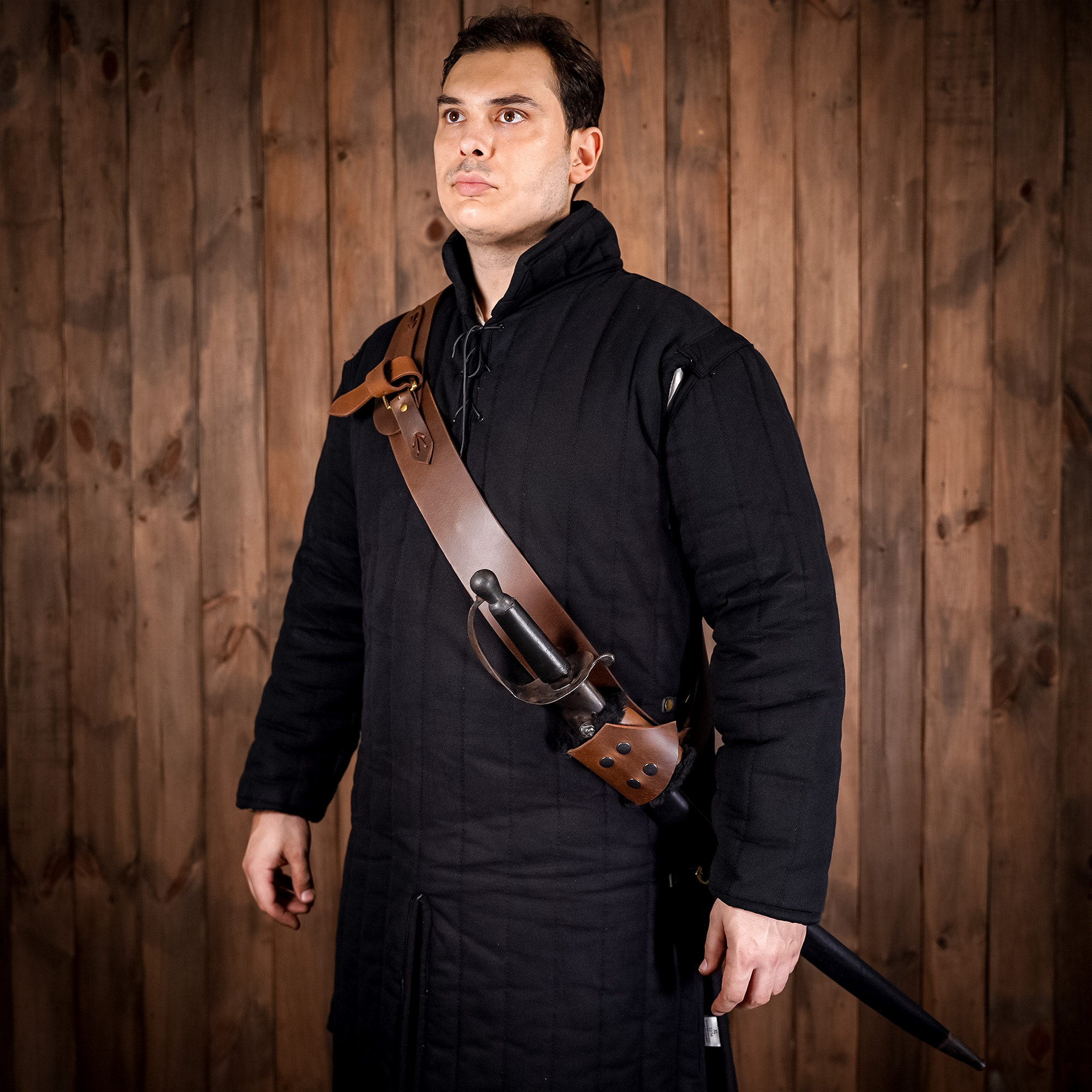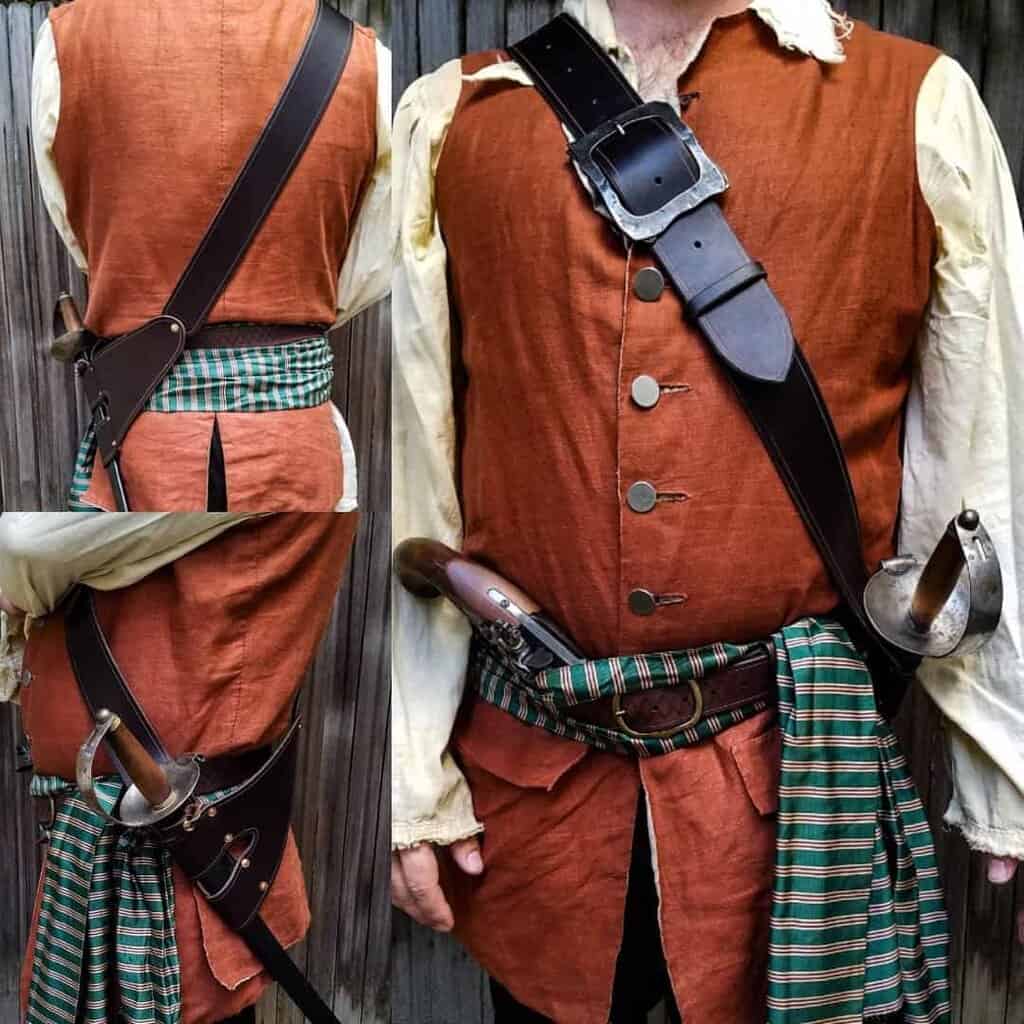Introduction to Baldric
Baldric is a fascinating piece of attire with a rich history and significant cultural importance. Essentially, a baldric is a wide belt worn over one shoulder and across the body, typically used to carry a weapon such as a sword or bugle. Let’s dive into the world of baldrics and uncover their historical significance, design, and modern-day uses.
Etymology of Baldric
Origin of the Term
The word “baldric” is derived from the Middle French word “baudré,” which means a belt or girdle. This, in turn, comes from the Latin word “balteus,” which referred to a belt or band used for carrying a weapon. The term has evolved over the centuries, reflecting the changing uses and designs of this unique accessory.
Evolution of the Word
As languages evolved, so did the term “baldric.” In Old English, it was known as “baldring,” signifying its functional purpose. Over time, the spelling and pronunciation shifted, leading to the modern term we use today. This evolution mirrors the changes in the baldric’s use and significance throughout history.
Historical Uses of Baldric
Medieval Times
In medieval times, baldrics were primarily used by knights and soldiers to carry their swords. This allowed for easy access to their weapon while keeping their hands free for other tasks. The baldric was not only functional but also a symbol of rank and status, often adorned with intricate designs and decorations.
Renaissance Period
During the Renaissance, the baldric became a fashionable accessory among the nobility. It was often made from luxurious materials such as velvet and adorned with jewels and embroidery. This period saw the baldric transition from purely functional to a statement piece of high fashion.
Modern Times
In modern times, baldrics are still used in certain military and ceremonial contexts. They are often seen in historical reenactments and are a popular accessory in cosplay and LARP (Live Action Role-Playing) communities. The baldric has also found a place in contemporary fashion as a unique and stylish accessory.
Design and Materials
Typical Materials Used
Baldrics have been made from a variety of materials throughout history. Leather is the most common material due to its durability and strength. However, fabric, velvet, and even metal have been used, especially in ceremonial baldrics.
Common Designs and Styles
Designs vary widely, from simple, functional straps to highly ornate pieces. Some baldrics feature embroidery, metal studs, or jewels, reflecting the wearer’s status and the period’s artistic trends. The style and decoration often indicate the baldric’s purpose, whether for battle, ceremony, or fashion.
Functionality of a Baldric
Weapon Holder
The primary function of a baldric has always been to hold a weapon. By distributing the weight across the shoulder and body, it allows the wearer to carry heavy weapons comfortably and access them quickly.
Symbol of Rank
In many cultures, the baldric also served as a symbol of rank or status. High-ranking officials and nobility often wore more elaborate baldrics, signifying their position and authority.
Baldric in Literature and Media
Appearances in Classic Literature
Baldrics have made numerous appearances in classic literature, symbolizing bravery and nobility. For instance, in Shakespeare’s plays, knights and warriors are often depicted wearing baldrics, emphasizing their readiness for battle.
Representation in Modern Media
In modern media, baldrics are frequently seen in fantasy and historical films and TV shows. Characters like Aragorn in “The Lord of the Rings” and Jaime Lannister in “Game of Thrones” are often depicted wearing baldrics, adding to their heroic and noble personas.
Cultural Significance
European Cultures
In European cultures, the baldric was a common accessory for soldiers and nobility. It represented both functionality and status, often richly decorated to reflect the wearer’s importance.
Asian Cultures
While not as prevalent, similar accessories to the baldric can be found in Asian cultures. For instance, samurai warriors used sashes to carry their swords, serving a similar purpose to the European baldric.
Other Global Cultures
Various other cultures have their versions of the baldric, each with unique designs and purposes. These accessories reflect the universal need for functional and decorative ways to carry weapons and other items.
Making a Baldric
Step-by-Step Guide
- Gather Materials: Leather, fabric, or other durable materials, scissors, needle and thread, decorative elements (optional).
- Measure and Cut: Measure the appropriate length from shoulder to opposite hip and cut the material.
- Sew the Edges: Fold and sew the edges for a clean finish.
- Add Fastenings: Attach buckles or other fastenings for adjustability.
- Decorate: Add any desired decorations, such as embroidery or metal studs.
Tools and Materials Needed
To make a baldric, you’ll need:
- Durable material (leather, fabric)
- Scissors
- Needle and thread or sewing machine
- Buckles or fastenings
- Decorative elements (optional)
Baldric vs. Other Straps and Belts
Differences and Similarities
Baldrics differ from other straps and belts primarily in their design and purpose. Unlike a belt worn around the waist, a baldric is worn over the shoulder, distributing weight more evenly. This design makes it ideal for carrying heavy items like weapons.
Usage Comparisons
While belts are used primarily to hold clothing in place, baldrics have a more functional use in carrying items. However, both can be decorative and indicate status or rank.
Modern Uses of Baldric
Fashion Accessory
In modern fashion, baldrics are making a comeback as unique and stylish accessories. They add a historical and dramatic flair to outfits, often seen in avant-garde and high-fashion designs.
Functional Uses Today
Beyond fashion, baldrics are used in reenactments, cosplay, and even by some modern military units for ceremonial purposes. They provide a practical and historical way to carry items.
Famous Baldric Wearers
Historical Figures
Historical figures such as knights, samurais, and even certain monarchs are often depicted wearing baldrics. These individuals used the baldric not only for its practical purposes but also as a symbol of their status and prowess.
Fictional Characters
In fiction, characters like Zorro, Robin Hood, and fantasy heroes are frequently portrayed with baldrics. These characters embody bravery, adventure, and nobility, all qualities symbolized by the baldric.
How to Wear a Baldric
Proper Positioning
To wear a baldric properly, drape it over one shoulder and across your body, ensuring it rests comfortably on your hip. Adjust the length so it doesn’t impede movement and provides easy access to any carried items.
Tips for Comfort and Style
For comfort, ensure the baldric is not too tight and that the weight is evenly distributed. For style, choose a baldric that complements your outfit and reflects your personal taste.
Collecting Baldrics
Where to Find Authentic Baldrics
Authentic baldrics can be found in antique shops, online marketplaces, and specialty stores focused on historical items. Ensure you verify the authenticity before purchasing.
What to Look For in a Collectible Baldric
When collecting baldrics, look for signs of quality craftsmanship, historical accuracy, and unique decorative elements. These factors can significantly affect the value and appeal of the piece.
Caring for Your Baldric
Cleaning and Maintenance Tips
To clean a leather baldric, use a damp cloth and mild soap, avoiding harsh chemicals. For fabric baldrics, follow the care instructions specific to the material. Regularly check for wear and tear and make necessary repairs to prolong its life.
Storing Your Baldric
Store your baldric in a cool, dry place, away from direct sunlight to prevent damage. Hanging it up can help maintain its shape and prevent creases.
Conclusion
Baldrics are more than just functional items; they are a piece of history and culture. From medieval knights to modern-day fashionistas, the baldric has evolved in design and purpose, maintaining its significance through the ages. Whether you are a history enthusiast, a fashion lover, or simply curious, the baldric offers a fascinating glimpse into the past and its lasting impact on the present.
FAQs
What is the difference between a baldric and a sash?
A baldric is designed to carry items, typically weapons, across the body, while a sash is generally a decorative cloth worn around the waist or over the shoulder without carrying anything.
Can a baldric be used for non-military purposes?
Yes, baldrics are often used in modern fashion, reenactments, and ceremonial contexts, making them versatile beyond military use.
How do you clean a leather baldric?
Clean a leather baldric with a damp cloth and mild soap, avoiding harsh chemicals. Regular conditioning with leather oil can keep it supple.
Where can I buy a historical baldric?
Historical baldrics can be purchased from antique shops, online marketplaces, and specialty stores focused on historical replicas.
Are baldrics still used in modern military?
Yes, some modern military units use baldrics for ceremonial purposes, maintaining a connection to their historical roots.
